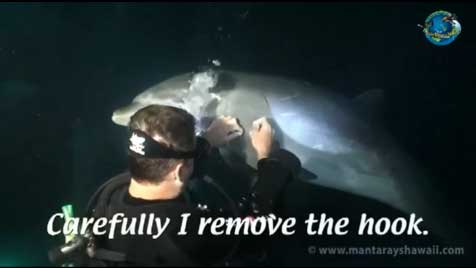A SEA OF TRASH

For at least the past 10 years, I’ve been telling anyone who will listen about the impending catastrophic results of dumping plastic into our oceans. I’ve written about various research projects into the Pacific Gyre – AKA: The Great Pacific Garbage Patch, and Project Kaisei, Mary Crowley San Francisco-based expedition team that studies marine debris in the North Pacific Gyre in hopes of cleaning up the pollution that will ultimately cause irreversible damage to oceans. Problems like Acidification, temperature rise and worse, destruction of marine habitats.
They were among the first to study ways in which we can perhaps clean up the garbage and fortunately, many have followed. Scripps Institute of Oceanography, in conjunction with the University of California, San Diego, has also been involved in important research.
A new study, release in May 2012, follows a report published last year by Scripps researchers in the journal Marine Ecology Progress Series showing that nine percent of the fish collected during their study in 2009, called SEAPLEX (Scripps Environmental Accumulation of Plastic Expedition), “contained plastic waste in their stomachs. That study estimated that fish in the intermediate ocean depths of the North Pacific Ocean ingest plastic at a rate of roughly 12,000 to 24,000 tons per year.”
It’s enough to make you sick, just thinking about it! The cause… a 100-fold upsurge in human-produced plastic garbage in the ocean, which is altering habitats in the marine environment, according to the study led by graduate students at Scripps.
SEAPLEX concentrated their studies a thousand miles west of California, onboard the Scripps research vessel New Horizon. During the voyage, they documented “an alarming amount of human-generated trash, mostly broken down bits of plastic the size of a fingernail floating across thousands of miles of open ocean.”

LEFT: Examples of a not-yet-hatched sea skater (Halobates sericeus) egg (top), about the size of a grain of rice, and a hatched egg (bottom). Photo: Miriam Goldstein, Scripps Institution of Oceanography at UC San Diego. RIGHT: SEAPLEX researchers collected an alarming amount of small bits of broken down plastic floating across thousands of miles of open ocean. Photo: Scripps Institution of Oceanography at UC San Diego.

A fully-grown sea skater
Another new study, this one in the journal Biology Letters, reveals that plastic debris in the area known as the “Great Pacific Garbage Patch” has increased by 100 times over the past 40 years, leading to changes in the natural habitats of animals such as the marine insect Halobates sericeus. These “sea skaters” or “water striders”-relatives of pond water skaters-inhabit water surfaces and lay their eggs on flotsam. Naturally existing surfaces for their eggs usually include, for example: seashells, seabird feathers, tar lumps and pumice. In the new study researchers found that sea skaters have exploited the influx of plastic garbage as a new surface for their eggs. This has led to a rise in the insect’s egg densities in the North Pacific Subtropical Gyre.

During SEAPLEX, sea skaters and plastic trash were collected with a fine-meshed net called a “manta net,” seen here being deployed from R/V New Horizon by Miriam Goldstein and Mario Aguilera. Photo: J. Leichter, Scripps Institution of Oceanography at UC San Diego
Such an increase, documented for the first time in a marine invertebrate (animal without a backbone) in the open ocean, may have consequences for animals across the marine food web, such as crabs that prey on sea skaters and their eggs.
“This paper shows a dramatic increase in plastic over a relatively short time period and the effect it’s having on a common North Pacific Gyre invertebrate,” said Scripps graduate student Miriam Goldstein, lead author of the study and chief scientist of SEAPLEX, a UC Ship Funds-supported voyage. “We’re seeing changes in this marine insect that can be directly attributed to the plastic.”
In April, researchers with the Instituto Oceanográfico in Brazil published a report that eggs of Halobates micans, another species of sea skater, were found on many plastic bits in the South Atlantic off Brazil.
“Plastic only became widespread in late ’40s and early ’50s, but now everyone uses it and over a 40-year range we’ve seen a dramatic increase in ocean plastic,” said Goldstein. “Historically we have not been very good at stopping plastic from getting into the ocean so hopefully in the future we can do better.”
Coauthors of the study include Marci Rosenberg, a student at UCLA, and Scripps Research Biologist Emeritus Lanna Cheng.

Microplastic concentrations in 1972-1987 (a and b) and 1999-2010 (c and d) based on new data (SEAPLEX, NOAA Ship Okeanos Explorer cruises), Algalita Marine Research Foundation as well as published data based on Wong et al (1974), Shaw (1977), Day & Shaw (1987), Gilfillan et al (2009) and Doyle et al (2011).
To read the entire research article, go to http://scrippsnews.ucsd.edu/Releases/?releaseID=1271
If you’d like to make a difference, here are
10 Things You Can Do To Save Our Oceans:
- DONATE to the Ocean Conservancy
- Be a part of the expedition
- Ditch plastic and use reusable bags, bottles, containers, utensils, and even straws. Try going completely plastic free to appreciate how much of the plastic in our lives goes unnoticed.
- Participate in International Coastal Cleanup. Pick up litter on beaches and help reduce coastal pollution. Much of the plastic and debris found in the ocean are first discarded on the beach. Bring a trash bag with you for your garbage, and organize a beach cleanup party with friends and family or local community members.
- Recycle as much as you can. The more, the better, so it goes nowhere else than into the virtuous cycle of humans reusing our own junk.
- Reduce your energy use
- Use less fertilizer -Grow your lawn and garden organically.
- Choose your seafood wisely
- Tell Congress to Fight Ocean Plastic!
- Take a Pledge To Stop Plastic Trash – It’s time!
Read Full Post »














